- Industries
Industries
- Functions
Functions
- Insights
Insights
- Careers
Careers
- About Us
- Marketing & Advertising
- By Omega Team
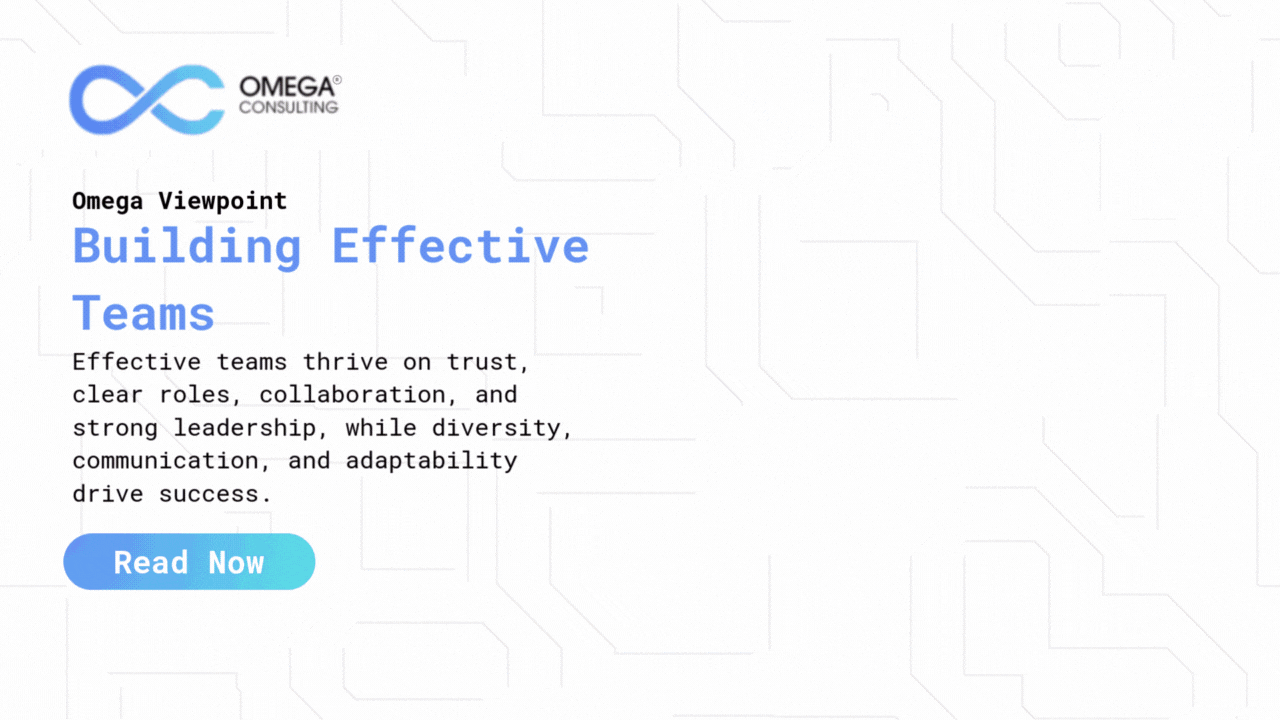
Building effective teams is essential for organizational success, as they drive innovation, solve complex challenges, and achieve sustainable growth. In today’s dynamic work environments, where remote work, hybrid models, and global collaboration are the norm, the ability to create high-performing teams is more critical than ever. Effective teams are built on trust, clear communication, shared goals, and diverse perspectives, which together foster collaboration and resilience. Leaders play a pivotal role in cultivating a culture that supports teamwork, leveraging strategies, tools, and data-driven insights to enhance performance. By aligning human elements with modern methodologies, organizations can create teams that not only excel in achieving their objectives but also empower their members to thrive and adapt in an ever-changing business landscape.
Understanding Team Effectiveness
Characteristics of High-Performing Teams
Shared Vision: A shared vision provides a sense of purpose and direction for the team. It aligns individual efforts with the broader organizational objectives, ensuring everyone is working toward a common goal. When the vision is clear, team members can prioritize tasks effectively and remain focused during challenges. This clarity also fosters a sense of ownership and motivation, as everyone understands how their contributions impact the team’s success.
Effective Communication: Clear and open communication is the backbone of any successful team. It ensures that information flows seamlessly, reducing misunderstandings and enhancing collaboration. Effective communication involves active listening, where team members not only speak but also understand and respond to others’ perspectives. Transparent communication also helps in addressing issues early, preventing conflicts from escalating.
Accountability: Accountability ensures that every team member takes responsibility for their tasks and contributions. It creates a culture where individuals own both successes and failures, fostering trust within the team. When team members are accountable, they are more likely to meet deadlines and deliver quality work. Leaders play a crucial role by setting expectations and holding everyone to the same standards.
Core Elements of Team Dynamics
Trust: Trust is the foundation of any high-performing team. It allows team members to rely on one another, share ideas freely, and take calculated risks without fear of judgment. Building trust requires consistent actions, such as meeting commitments and showing respect for others’ opinions. A lack of trust can lead to misunderstandings, reduced collaboration, and lower productivity.
Psychological Safety: Psychological safety refers to an environment where team members feel safe to express themselves without fear of ridicule or negative consequences. It encourages creativity and innovation, as individuals are more likely to share unconventional ideas. Leaders can foster psychological safety by actively listening, valuing diverse perspectives, and avoiding punitive reactions to mistakes.
Collaboration: Collaboration is the process of working together effectively to achieve common goals. It involves leveraging the unique strengths and expertise of each team member. True collaboration requires mutual respect, clear communication, and a willingness to compromise. Teams that collaborate well can solve complex problems more efficiently and innovate more effectively.
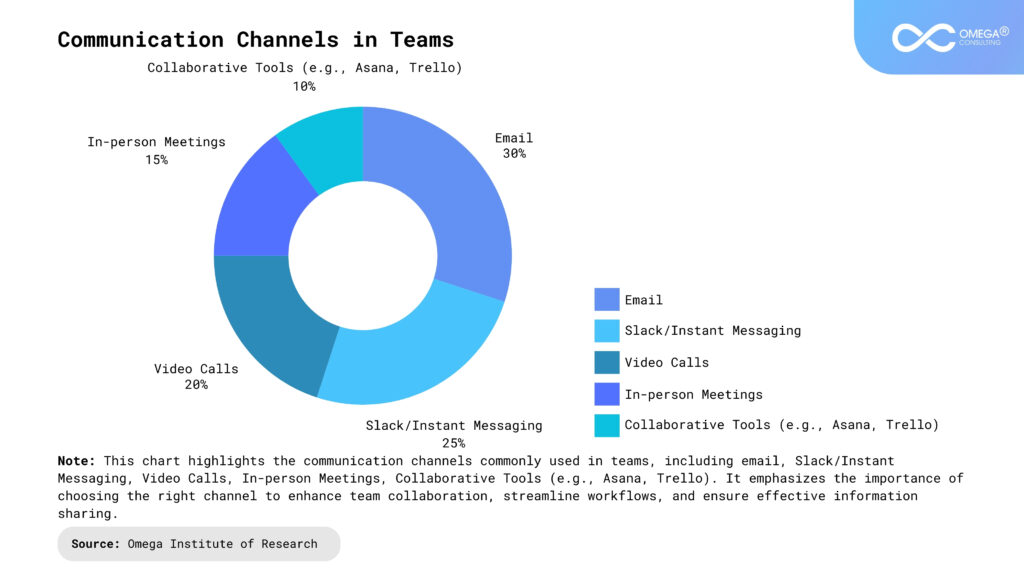
Phases of Team Development
The Team Growth Journey
Forming: The forming stage is where team members come together and start understanding their roles and responsibilities. During this phase, there may be uncertainty about goals and team dynamics. Leaders play a critical role by providing clarity and setting expectations. Icebreakers and team-building activities can help members build rapport and establish initial connections.
Storming: The storming stage is characterized by conflicts and differences as team members navigate varying opinions and work styles. This phase is essential for growth, as it helps uncover potential issues and encourages honest communication. Leaders must mediate conflicts constructively, ensuring that disagreements lead to better understanding rather than division.
Norming: In the norming stage, the team develops shared norms, values, and expectations. Members begin to trust one another and collaborate more effectively. This phase often involves setting up processes and workflows that streamline operations. Teams in the norming stage experience increased cohesion, which lays the groundwork for high performance.
Performing: The performing stage represents peak productivity and collaboration. Team members work seamlessly, leveraging each other’s strengths to achieve goals efficiently. This phase is marked by innovation, problem-solving, and consistent delivery of high-quality results. Leaders can focus on maintaining momentum and recognizing achievements to keep the team motivated.
Adjourning: Adjourning occurs when the team disbands after completing its objectives. This phase involves reflecting on successes and challenges to derive lessons for future projects. Leaders can facilitate this process by organizing debrief sessions and celebrating accomplishments. Adjourning is also an opportunity to acknowledge individual contributions and strengthen professional relationships.
Addressing Stage-Specific Challenges
Forming Challenges: Uncertainty about roles and goals can create confusion during the forming stage. Leaders should provide clear guidance, define objectives, and ensure that everyone understands their responsibilities. Regular check-ins can help address questions and align expectations.
Storming Challenges: Personality clashes and differing opinions are common during storming. If not managed effectively, these conflicts can escalate and hinder progress. Leaders must mediate disputes, encourage open dialogue, and emphasize the importance of mutual respect.
Norming Challenges: While the norming stage brings stability, there’s a risk of complacency. Teams may settle into routines that limit creativity and growth. Leaders should encourage continuous improvement by introducing new challenges and fostering innovation.
Performing Challenges: Sustaining high performance requires ongoing motivation and adaptability. Teams in this stage may face burnout or struggle with changing priorities. Leaders can address these issues by providing support, recognizing achievements, and ensuring a healthy work-life balance.
Adjourning Challenges: The adjourning stage can be emotionally challenging as team members part ways. Leaders should facilitate a smooth transition by celebrating accomplishments and offering opportunities for future collaboration.
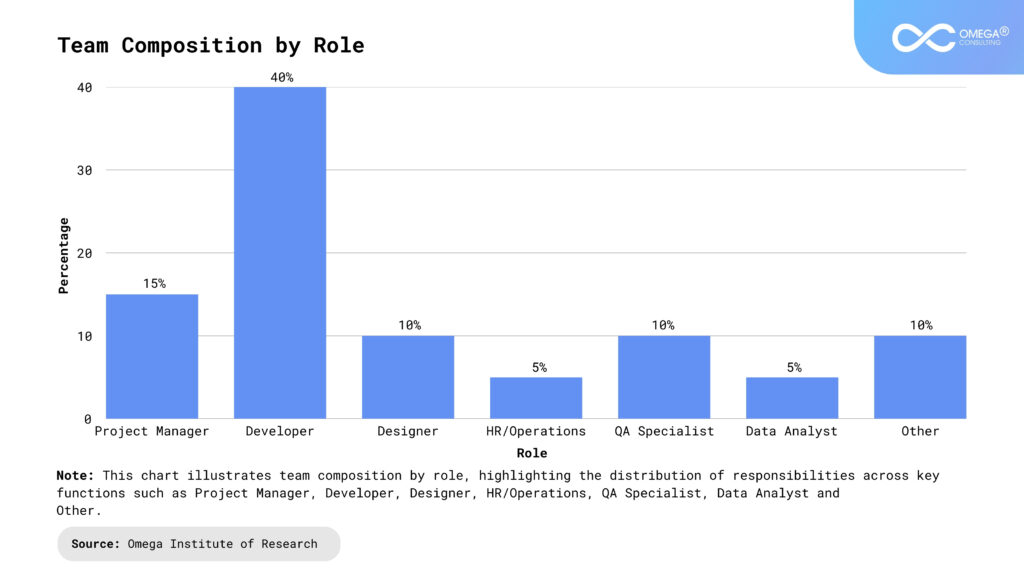
Building Blocks of Effective Teams
Leadership
Setting a Clear Vision: A strong leader provides a clear vision that aligns the team’s efforts with the organization’s goals. This vision acts as a guiding light, helping team members prioritize tasks and maintain focus. Leaders should communicate the vision consistently, ensuring it resonates with every team member. A well-articulated vision not only inspires but also fosters a sense of purpose and direction, motivating the team to overcome challenges.
Encouraging Participation: Inclusive leadership ensures that every team member feels valued and heard. Leaders can encourage participation by creating an environment where everyone is comfortable sharing ideas and opinions. Active listening and soliciting feedback demonstrate that contributions are valued, boosting morale and fostering collaboration. This inclusivity leads to better decision-making and innovation.
Resolving Conflicts Constructively: Conflicts are inevitable in any team, but effective leaders address them proactively and constructively. By mediating disputes and fostering open dialogue, leaders can turn conflicts into opportunities for growth. Constructive conflict resolution involves understanding the root cause, maintaining neutrality, and guiding the team toward mutually beneficial solutions.
Diversity and Inclusion
Promoting Cultural Competence: Cultural competence involves understanding and respecting the diverse backgrounds, experiences, and perspectives of team members. Leaders can promote cultural competence by providing training, fostering open discussions about diversity, and celebrating different cultural traditions. This approach not only strengthens team cohesion but also drives creativity and innovation.
Addressing Unconscious Biases: Unconscious biases can hinder inclusivity and fairness within a team. Addressing these biases involves raising awareness through workshops and encouraging self-reflection. Leaders should implement unbiased hiring practices and create policies that promote equity. A bias-free environment ensures that all team members feel valued and have equal opportunities to contribute.
Ensuring Equitable Opportunities: Equity goes beyond equality by recognizing and addressing the unique needs of each team member. Leaders should provide resources, mentorship, and support tailored to individual circumstances. Equitable opportunities empower underrepresented team members, fostering a sense of belonging and driving overall team performance.
Skill Alignment
Hard Skills: Hard skills refer to the technical expertise required to perform specific tasks. Effective teams ensure that members have the necessary technical competencies for their roles. Leaders should assess skill gaps and provide training or resources to bridge them. Aligning hard skills with project requirements ensures efficiency and high-quality outcomes.
Soft Skills: Soft skills, such as communication, adaptability, and problem-solving, are essential for effective collaboration. Teams with strong soft skills navigate challenges more smoothly and maintain positive dynamics. Leaders should prioritize the development of these skills through workshops, coaching, and real-world practice. Soft skills complement technical expertise, enhancing overall team effectiveness.
Tools and Strategies for Team Effectiveness
Communication Tools
Platforms for Real-Time Collaboration: Tools like Slack, Microsoft Teams, and Zoom enable real-time communication, ensuring seamless collaboration across teams. These platforms facilitate quick decision-making and provide channels for sharing updates, files, and feedback. By integrating these tools, teams can maintain transparency and stay aligned, regardless of physical location.
Asynchronous Communication Tools: Asynchronous tools, such as email and project management software, allow team members to communicate across different time zones and schedules. These tools ensure inclusivity by accommodating diverse working hours. Asynchronous communication reduces pressure and allows team members to respond thoughtfully, improving the quality of interactions.
Conflict Resolution Techniques
Encouraging Active Listening: Active listening involves fully focusing on the speaker, understanding their perspective, and responding thoughtfully. This technique fosters empathy and reduces misunderstandings during conflicts. Leaders can model active listening by paraphrasing points, asking clarifying questions, and validating others’ feelings.
Using Mediation: Mediation involves a neutral third party facilitating discussions to resolve disputes. Mediators help team members articulate their concerns, identify common ground, and develop mutually acceptable solutions. This structured approach ensures fairness and prevents conflicts from escalating.
Establishing Ground Rules: Ground rules set clear expectations for respectful interaction within the team. These rules may include guidelines for communication, conflict resolution, and decision-making. By establishing and enforcing ground rules, leaders create a framework for constructive collaboration and minimize disruptions.
The Role of Technology in Team Building
Virtual Teams and Remote Work
Seamless Communication: Video conferencing tools like Zoom and messaging platforms like Slack enable remote teams to communicate effectively. These tools bridge geographical gaps, ensuring that team members stay connected and aligned. Regular virtual meetings foster collaboration and maintain team cohesion, even in remote settings.
Project Management Tools: Platforms like Trello, Asana, and Monday.com streamline task management, ensuring that everyone stays on track. These tools provide transparency by allowing team members to view project timelines, responsibilities, and progress. Effective use of project management tools enhances accountability and reduces confusion.
Virtual Team-Building Activities: Virtual team-building activities, such as online games or virtual happy hours, strengthen relationships among remote team members. These activities promote camaraderie and reduce feelings of isolation, fostering a sense of belonging within the team.
AI and Analytics
Identifying Skill Gaps: AI-driven tools analyze team performance data to identify areas where additional training or resources are needed. By pinpointing skill gaps, leaders can implement targeted development programs, ensuring that the team remains competitive and capable.
Monitoring Team Sentiment: AI-powered sentiment analysis tools assess team morale and engagement levels through surveys and feedback. These insights help leaders address concerns proactively, maintaining a positive and productive work environment.
Providing Personalized Feedback: AI tools offer data-driven feedback tailored to individual performance. This personalized approach helps team members understand their strengths and areas for improvement, fostering continuous growth and development.
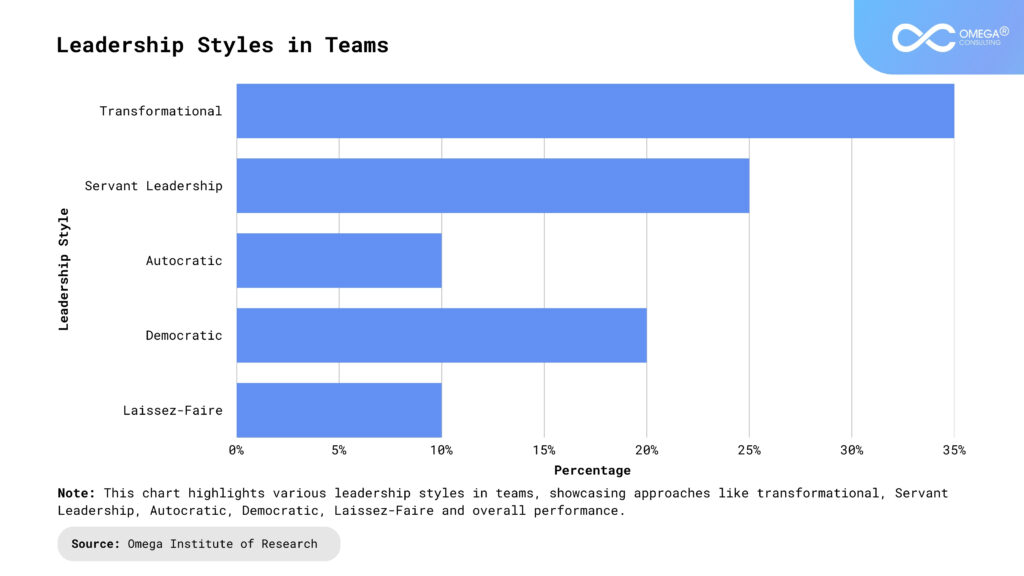
Case Studies: High-Performing Teams in Action
Google’s Project Aristotle
Psychological Safety as a Key Factor: Google’s Project Aristotle highlighted psychological safety as the most critical element for team success. Psychological safety enables team members to express ideas, admit mistakes, and seek help without fear of judgment or retaliation. This openness fosters creativity, problem-solving, and trust, allowing teams to collaborate effectively even in high-pressure situations.
Clarity of Roles and Goals: The study also emphasized the importance of clearly defined roles and goals. When team members understand their responsibilities and how they contribute to the larger objective, they can focus their efforts more effectively. This clarity reduces redundancy and ensures alignment within the team.
Dependability and Structure: High-performing teams at Google demonstrated a strong sense of dependability, with each member delivering quality work on time. A structured approach to task management and regular check-ins helped maintain accountability. This dependability created a foundation of trust and reliability within the team.
Agile Teams in Tech
Iterative Progress for Adaptability: Agile teams prioritize iterative progress, breaking down large projects into smaller, manageable tasks completed in short cycles (sprints). This approach allows teams to adapt quickly to changes, test solutions, and refine processes based on feedback. Iterative progress ensures that teams remain flexible and responsive to evolving requirements.
Close Collaboration: Agile teams emphasize close collaboration between members and stakeholders. Daily stand-up meetings and open communication channels keep everyone aligned and informed. This collaboration fosters a shared sense of ownership and accountability, driving team cohesion and productivity.
Focus on Continuous Improvement: Agile methodologies include regular retrospectives to evaluate team performance and identify areas for improvement. By fostering a culture of continuous learning and adaptability, Agile teams consistently enhance their effectiveness, delivering high-quality outcomes in dynamic environments.
Measuring Team Effectiveness
Key Performance Indicators (KPIs)
Task Completion Rates: Task completion rates measure how efficiently the team meets its deadlines and delivers results. High completion rates indicate strong organization, effective time management, and a clear understanding of priorities. Leaders can track this metric to identify bottlenecks and optimize workflows.
Employee Engagement Scores: Engagement scores reflect team members’ emotional investment in their work and the organization. High engagement correlates with better performance, lower turnover, and higher morale. Regular surveys and feedback sessions can help leaders gauge engagement levels and implement strategies to improve them.
Peer Feedback: Peer feedback provides valuable insights into team dynamics and individual contributions. Constructive feedback from colleagues highlights strengths and areas for improvement, fostering mutual respect and collaboration. Leaders should encourage a culture of open and honest feedback to enhance team performance.
Continuous Improvement
Regular Team Assessments: Conducting regular assessments of team dynamics and performance helps identify areas for improvement. Tools like surveys, performance reviews, and feedback sessions provide actionable insights. These assessments enable leaders to address issues proactively and refine team strategies.
Adapting to Changing Needs: Teams must adapt to evolving organizational goals, market conditions, and technological advancements. Continuous improvement involves staying agile and responsive to these changes, ensuring that the team remains competitive and effective. Regular training and upskilling initiatives support this adaptability.
Celebrating Successes: Acknowledging and celebrating achievements reinforces positive behaviors and boosts morale. Celebrations, whether formal or informal, create a sense of accomplishment and motivate team members to strive for future success. Leaders should make recognition an integral part of team culture.
Future Trends in Team Building
Hybrid Work Models
Balancing In-Person and Remote Collaboration: Hybrid work models combine the benefits of in-person and remote collaboration, offering flexibility while maintaining team cohesion. Organizations must establish clear guidelines for hybrid work, such as defining when in-person meetings are necessary and leveraging technology for seamless remote communication.
Creating Inclusive Hybrid Environments: To ensure inclusivity, leaders should provide equal opportunities for remote and in-office employees. This includes access to resources, participation in decision-making, and recognition for contributions. Inclusive hybrid environments foster fairness and engagement across the team.
Focus on Well-Being
Prioritizing Mental Health: Organizations are increasingly recognizing the importance of mental health in team performance. Providing resources such as counseling, mental health days, and stress management programs helps employees maintain their well-being. A healthy team is more resilient, productive, and innovative.
Promoting Work-Life Balance: Encouraging work-life balance prevents burnout and enhances overall job satisfaction. Flexible schedules, reasonable workloads, and clear boundaries between work and personal life are essential for maintaining this balance. Leaders should model and support these practices to create a sustainable work environment.
Data-Driven Insights
Advanced Analytics for Team Performance: Data analytics tools provide detailed insights into team performance, identifying trends, strengths, and areas for improvement. Metrics such as productivity levels, engagement scores, and collaboration patterns inform data-driven decision-making.
Predictive Analytics for Team Composition: Predictive analytics can optimize team composition by analyzing individual skills, personalities, and working styles. These insights help organizations assemble teams with complementary strengths, enhancing overall effectiveness.
Real-Time Feedback Systems: Real-time feedback tools enable teams to address issues and make adjustments promptly. By providing immediate insights, these systems support continuous improvement and help teams stay aligned with their goals.
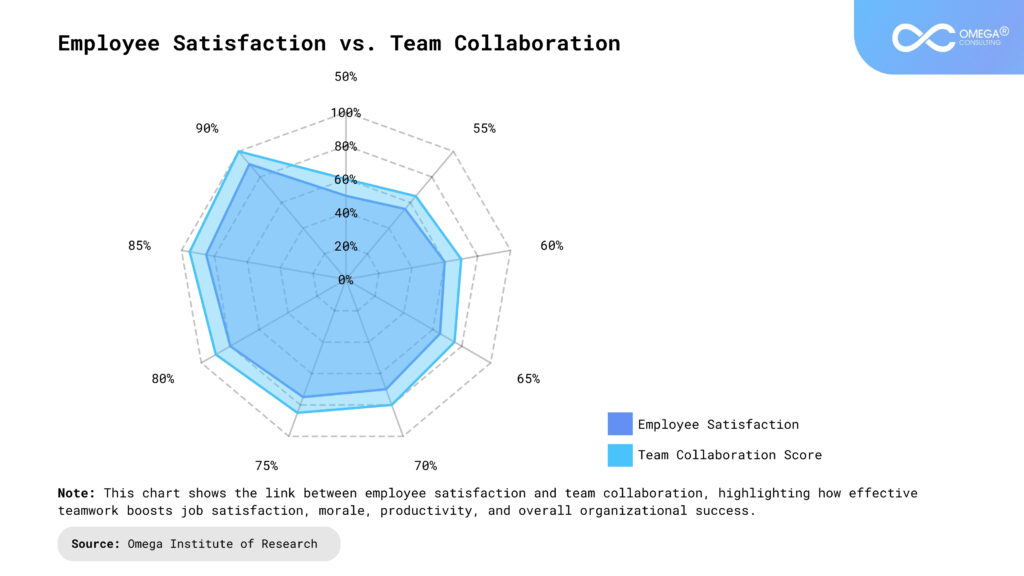
Conclusion
Developing effective teams is a strategic, ongoing process that requires vision, leadership, and continuous improvement. Building trust, embracing diversity, and leveraging modern tools are essential for creating teams that drive innovation and achieve exceptional results. Leaders play a crucial role in fostering a supportive culture, setting clear goals, and providing the resources necessary for success. While the journey to high performance is continuous, the rewards are significant—teams that collaborate effectively are more resilient, agile, and capable of driving long-term organizational success. Investing in team development leads to increased productivity, morale, and the ability to thrive in a competitive landscape.
- https://www.michaelpage.ae/advice/management-advice/development-and-retention/building-effective-team
- https://www.vantagecircle.com/en/blog/effective-team/
- https://hbr.org/2012/04/consistently-building-highly-e
- https://www.kornferry.com/capabilities/leadership-professional-development/training-certification/adaptive/building-effective-teams
- https://www.sciencedirect.com/science/article/abs/pii/S1546144023000510
Subscribe
Select topics and stay current with our latest insights
- Functions